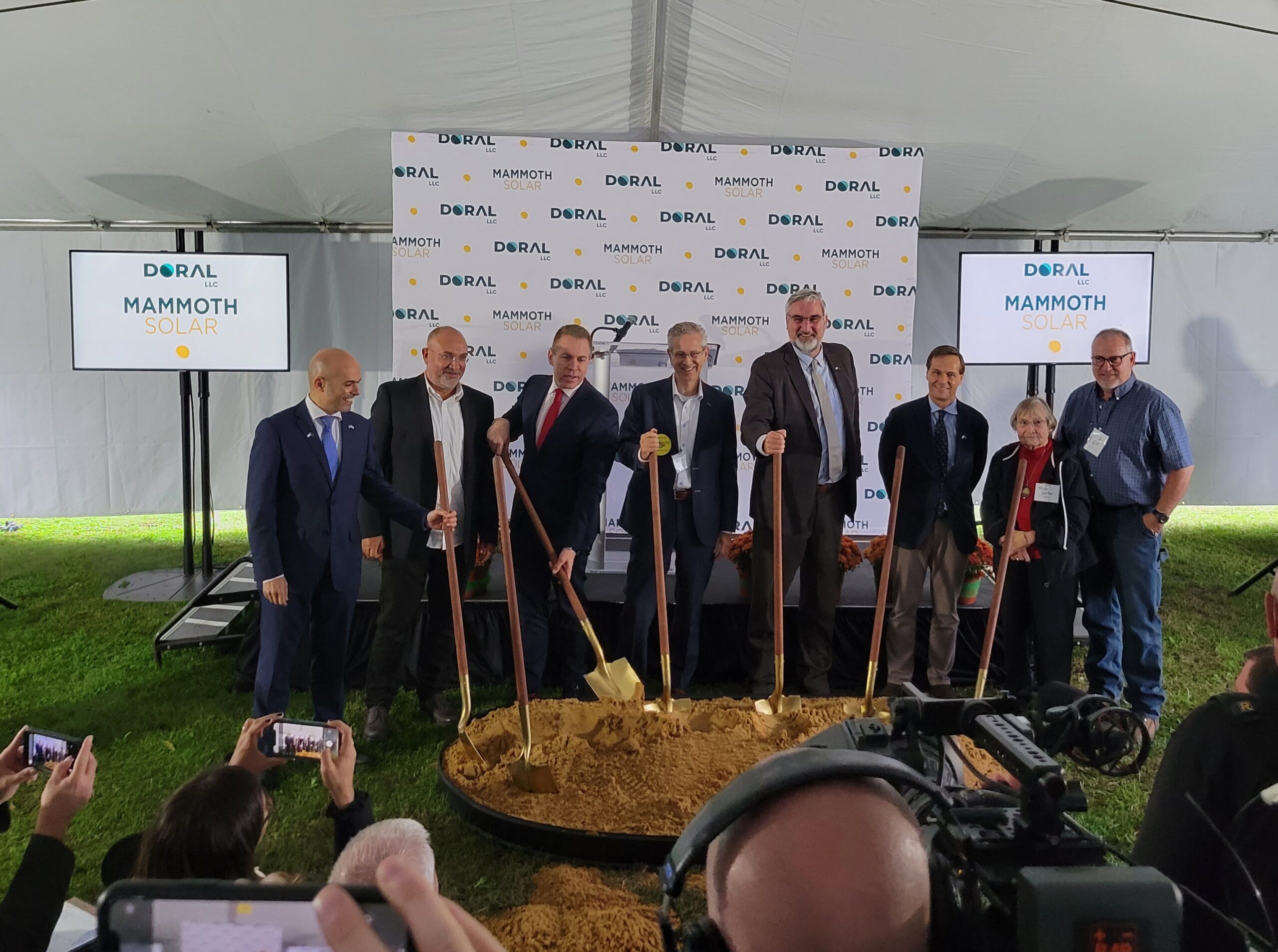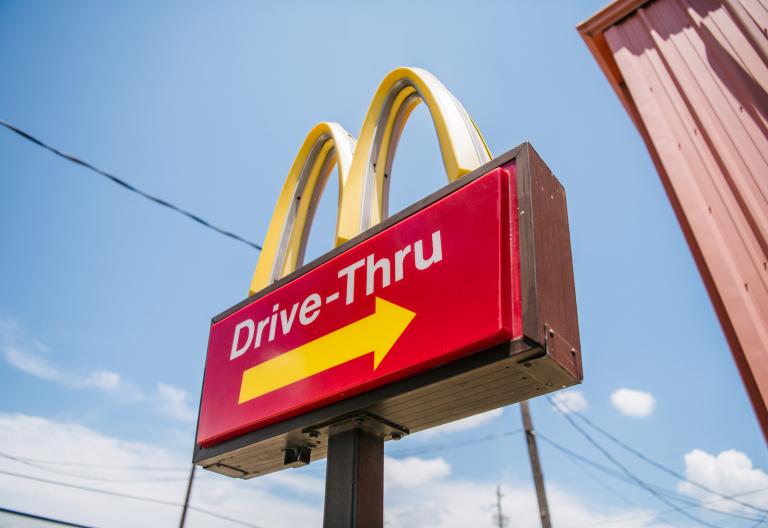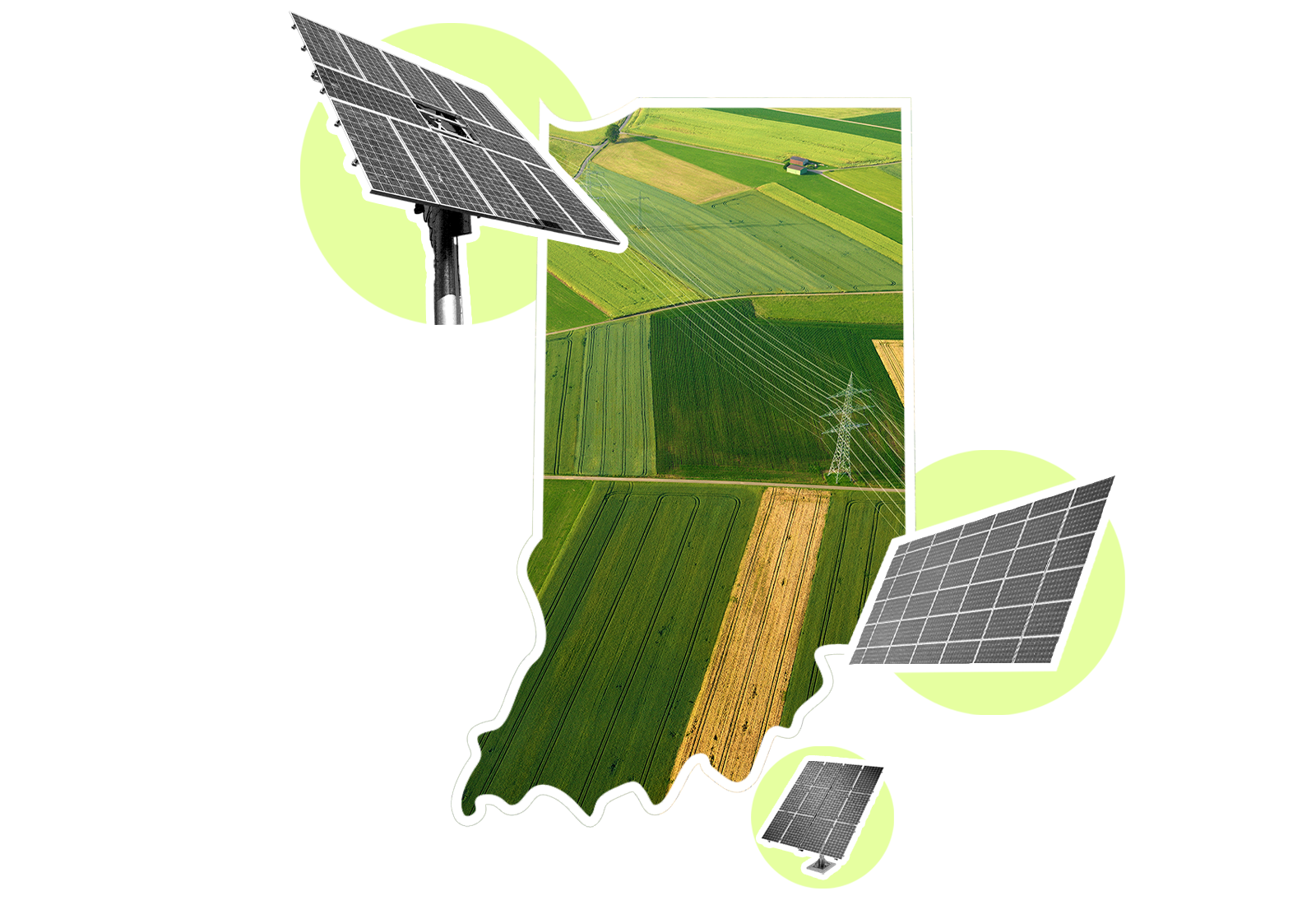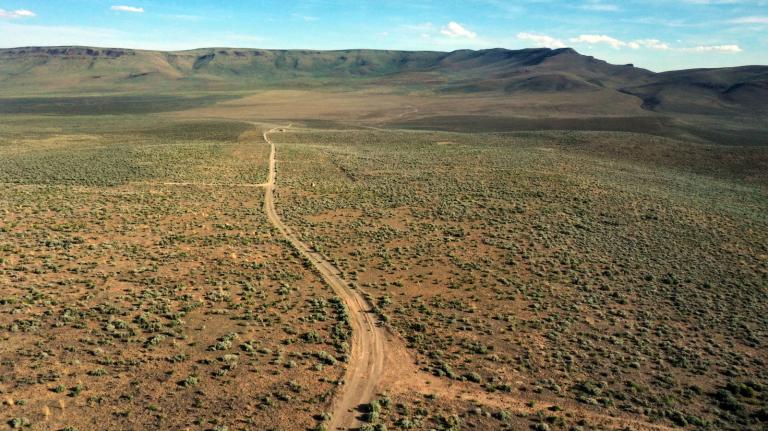Among vast fields of corn and soybeans in rural northwest Indiana, construction workers broke ground in October on what will be the largest solar farm in the United States. The project, known as Mammoth Solar, will cover 13,000 acres, spread across two counties, with 60 landowners involved. It will generate enough electricity to power nearly a quarter-million homes in an area with deep ties to the fossil fuel industry.
Indiana is home to the largest inland coal refinery in the country. It ranks in the top 10 states for carbon emissions, both overall and per capita. And in 2020, the state used the third most coal in the United States, behind Texas and Missouri. Solar, meanwhile, accounts for less than 2 percent of Indiana’s electricity generation. In April, state legislation to establish renewable energy standards was killed after pushback from local officials.
Even in more environmentally progressive states, renewable developers often face a host of challenges that can prevent them from starting new projects. So how did the country’s largest solar farm, owned by Israel-based Doral Renewables, successfully set up shop in the Hoosier state?
After decades of reliance on coal, Indiana’s power system was poised for a change, largely due to aging infrastructure and economics. Four of the state’s electric utilities have announced plans to close their coal-fired plants soon. With the declining cost of solar, many utilities and developers have decided that construction of solar facilities is a better investment than new coal plants. Over the next two years, at least 15 solar projects stretching 1,000 acres or more each are slated to go online in the state, in addition to several other smaller solar farms.
“One of the implications of being such a coal-dependent state is that when those coal plants retire, it presents a whole host of opportunities for new generation for utilities,” Jesse Kharbanda, executive director of the Hoosier Environmental Council, told Grist. “Utilities simply need to find a way to replace the 9,000 megawatts of predominantly coal-fired power that has been retired over the last 15 years. They have come to the conclusion that they’re better off investing in renewables and gas.”
For the small rural counties playing host to these new solar facilities, it often simply comes down to the money. That was the case with the Mammoth Solar facility in Starke and Pulaski counties. The tax revenue from the 1.65-gigawatt project will account for nearly one-fifth of each of their annual budgets. And for many landowners, the payments they will receive from Doral Renewables will be more than they make farming the land or leasing it themselves. Landowners can expect to receive between $600 and $1,000 per acre per year that they lease out for solar panels. About 60 landowners have agreed to lease land to the project. Mammoth Solar in total is expected to bring $1.5 billion in investment to the state.

“You have communities that are struggling, especially in rural America, for revenue,” said Nick Cohen, president and co-founder of Doral Renewables.
It is a win-win for Doral as well. “Indiana has a competitive advantage for solar: It’s flat, the grid [transmission lines] system is there, and it’s in a rural place, which is perfect for solar,” said Cohen.
Cohen works with both Democratic and Republican governors and voters on other renewable projects throughout the country. “Renewable energy is the one thing that brings everybody together,” he said. “They might be coming together for different reasons, but they’re all together in one room.”
One landowner, Lori Meyer, told Grist that with droughts, pests, and the fluctuating commodities market, her farm’s success has been “really up and down” over the last several years. She co-owns land with her sister that’s been farmed in the family for several generations. Last year, they grew potatoes. Now, part of the family’s Fishburn Farm is being leased to Mammoth Solar. Her decision was also partly based on environmental concerns.
“One of the big reasons that both my sister and I decided to do this was because of our carbon footprint that we’re leaving for our kids,” she said.
Residents in Starke and Pulaski counties had previously turned down opportunities for wind development, because of concerns over noise and visual aesthetics. So, Cohen approached them about solar instead, which residents were more amenable to. To address the aesthetic concerns, Doral Renewables plans to plant trees along the edges of the solar farm, to hide the panels from view.
Cohen told Grist that Doral Renewables is working on strategies so that farmers can lease their land while still farming on it. Instead of soybeans and corn, farmers will likely grow blueberries and other orchard crops, he said. There’s also the possibility of sheep that graze underneath the panels.
But the project isn’t being welcomed by everyone. Many are concerned about the loss of quality farmland to industrial solar projects. In Pulaski County, 10 landowners filed lawsuits seeking to overturn the Board of Zoning Appeals’ approval of the Mammoth Solar project. A Facebook group called “Pulaski County Against Solar Project” has over 500 members united over concerns about farmland loss and an impact on property value.
One landowner, Harold Gerstandt, owns 80 acres of farmland where he grows corn and soybeans. Mammoth Solar asked him if they could put transmission lines through his land to connect the project’s different solar plots. Gerstandt hasn’t given the developers a final answer, but, he told Grist, he is almost certain to say no. The transmission lines could impact his irrigation, he worries.

“I want guarantees that if for any reason the irrigators wouldn’t be able to make their complete sweep on the farm, that they’re going to have to pay me,” he said. Gerstandt said that Mammoth Solar didn’t guarantee him that insurance would cover all crop damage.
“I’ve been wrestling with this thing since spring. About letting them come through, or not come through, and it’s just they’re so vague on stuff,” he said.
Even with the lawsuits, Mammoth Solar is proceeding with its plan. Full-scale construction is set to begin in the spring and is expected to take 18 months to finish. When complete, nearly 3 million solar panels will provide clean energy for homes across the state.




